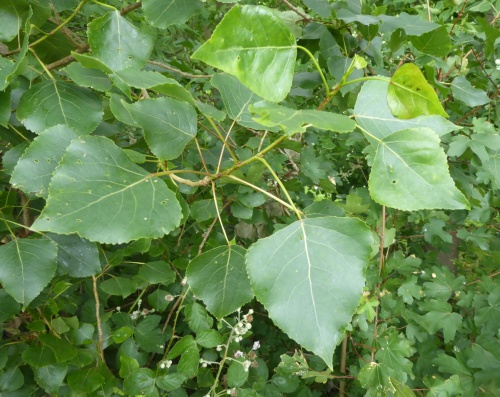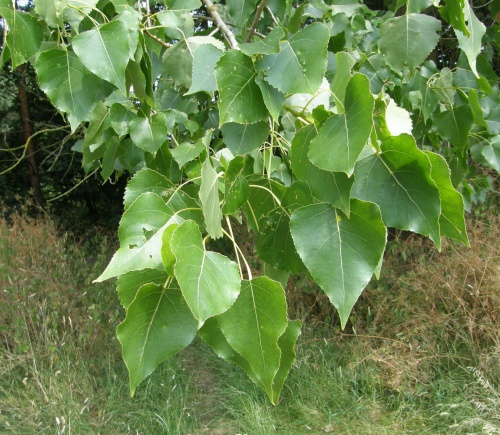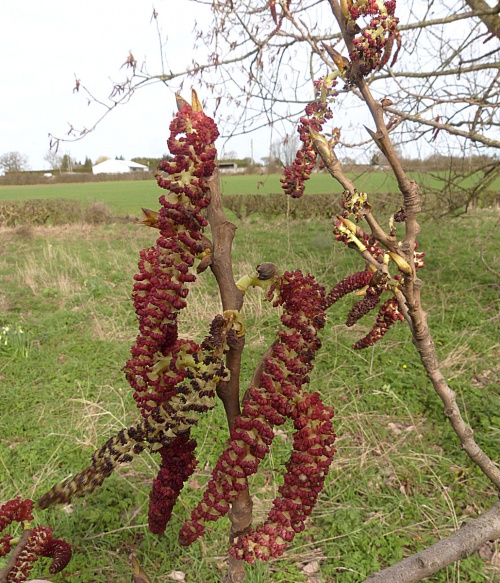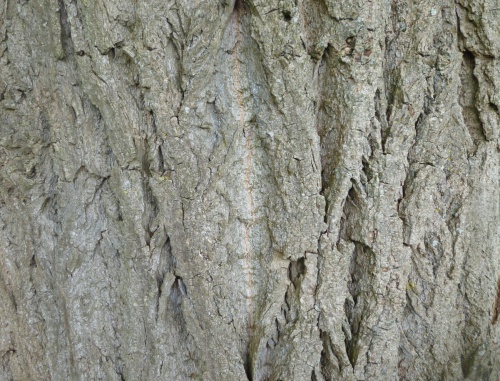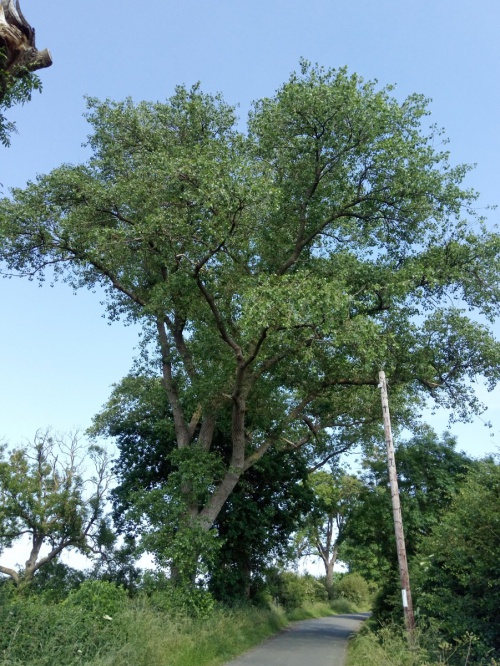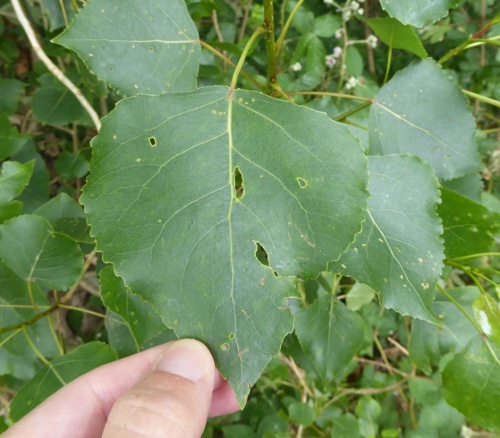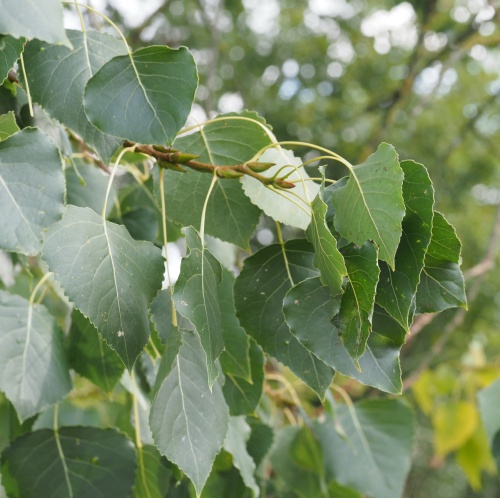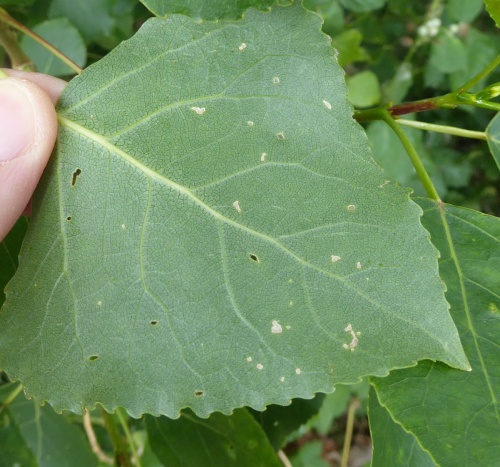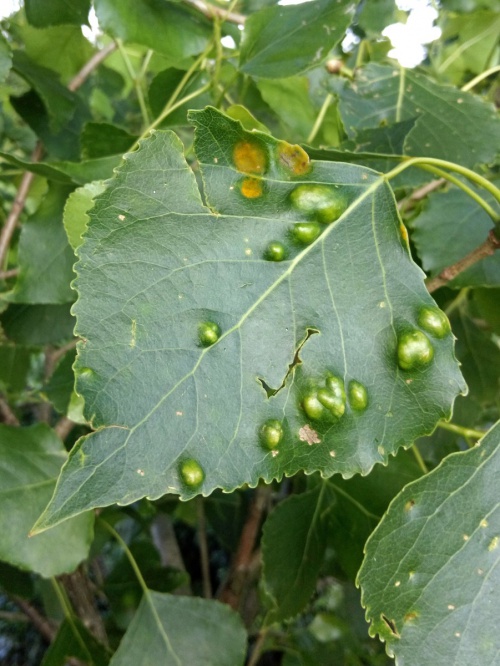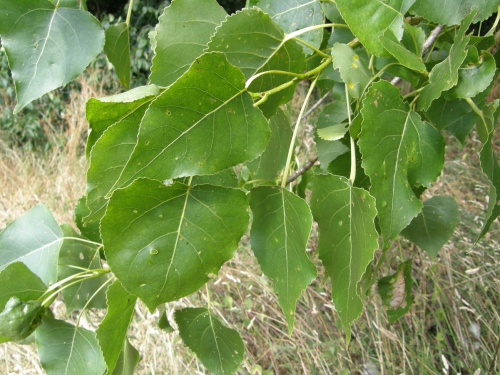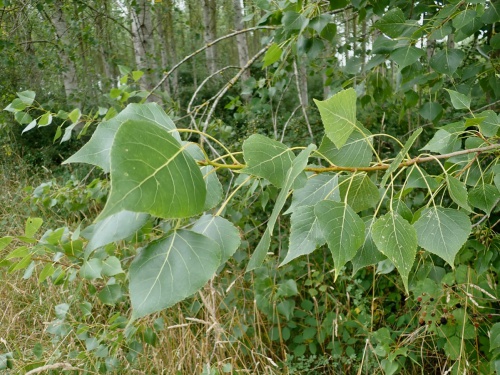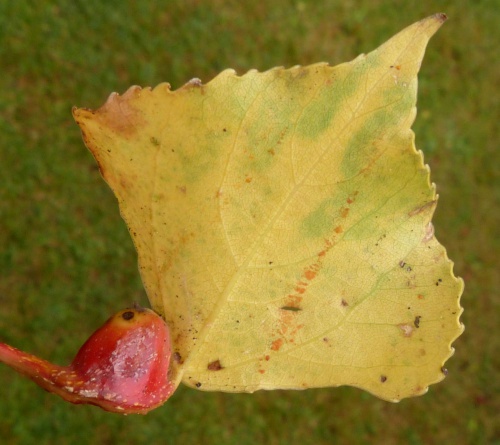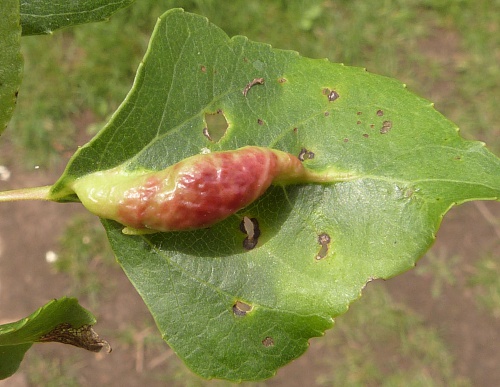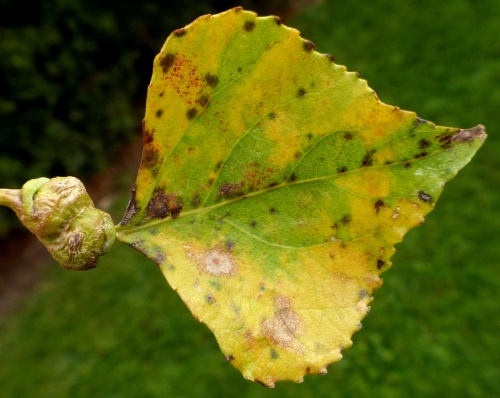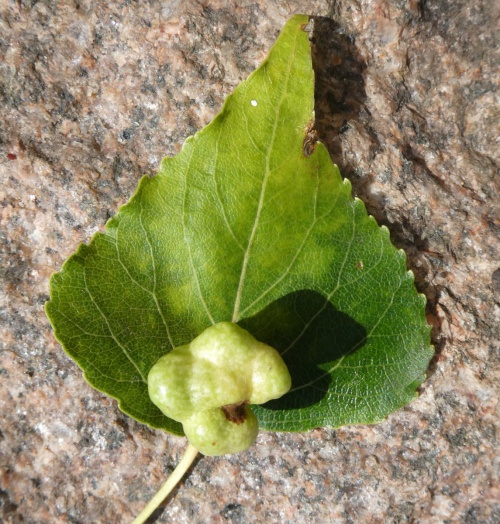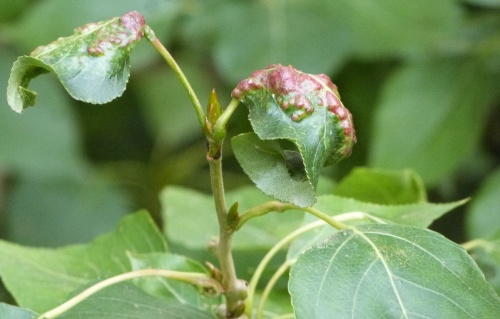Hybrid Black-poplar - Populus nigra x deltoides = P. x canadensis
A tall tree with spreading crown and upswept lower branches. The trunk is without burrs. It bears large red male catkins before the leaves, which arrive quite late. Leaves glossy green above when mature, shallowly toothed, long stalked and almost diamond shaped. Two glands are usually present at the base of the leaf where it joins the petiole.
There are many different cultivars, and Stace (4th edition) should be referred to for a key to these. Some cultivars are female.
The true native Black Poplar (Populus nigra) has similar foliage but is rare in Leicestershire and Rutland. It is a spreading tree with burrs on the trunk and does not have the large upswept branches of the hybrid tree.
Regularly planted and often found beside roads and in urban areas.
Catkins March and April.
Mainly recorded from England and Eastern Scotland.
Fairly frequent in Leicestershire and Rutland where it is often planted and may naturalise by suckering. In the 1979 Flora survey of Leicestershire it was found in 154 of the 617 tetrads.
Leicestershire & Rutland Map
Enter a town or village to see local records
MAP KEY:
Yellow squares = NBN records (all known data)
Coloured circles = NatureSpot records: 2020+ | 2015-2019 | pre-2015
UK Map
Species profile
- Common names
- Hybrid Black-poplar
- Species group:
- Trees, Shrubs & Climbers
- Kingdom:
- Plantae
- Order:
- Malpighiales
- Family:
- Salicaceae
- Records on NatureSpot:
- 24
- First record:
- 01/01/1979 (Patricia Evans)
- Last record:
- 04/08/2023 (Cann, Alan)
Total records by month
% of records within its species group
10km squares with records
The latest images and records displayed below include those awaiting verification checks so we cannot guarantee that every identification is correct. Once accepted, the record displays a green tick.
In the Latest Records section, click on the header to sort A-Z, and again to sort Z-A. Use the header boxes to filter the list.
Latest images
Latest records
Pemphigus bursarius
Pemphigus bursarius is an aphid which causes pouch galls to form in the petioles of the leaves in some species of Poplar. The galls are seen more often than the aphid, and are 15 x 6 to 8 mm and form on one side of the petiole opening in June to release aphids. They start off yellowy green and become quite red later.
Pemphigus populinigrae agg.
The fundatrices of the aphid Pemphigus populinigrae induce yellowish or dull reddish broad pouch-shaped galls on the midrib of the upperside of leaves of poplar (mainly Black Poplar and Lombardy Poplar). Mature galls are rounded and smooth on top and are sometimes partially subdivided The galls of Pemphigus populinigrae are usually located near the middle of the leaf and open on the underside of the leaf. The fundatrices are green or greyish green, and have no siphunculi. They have 4-segmented antennae which are about 0.17 times the length of the body. There are a number of aphids producing very similar galls on these poplar species notably P. phenax and P. gari. Identification to species level is very difficult, requiring expert examination to identify winged adults and for this reason we have decided to treat this group as a species aggregate.
Pemphigus spyrothecae
Pemphigus spyrothecae is an aphid that causes galls to form in the leaf petioles of its host trees. The galls are seen more often than the aphid. The galled petioles have 2-3 twists, which loosen up later in the year to release aphids through a slit along the gall.
Pemphigus populi
The aphid Pemphigus populi causes a green or greenish-yellow club-shaped gall to form on the leaves of Black Poplar and its hybrids such as Lombardy Poplar. The gall is found close to the base of the leaf. Mature Pemphigus populi alatae are greyish green with abundant wax.
Poplar-buttercup gall aphid
This aphid causes galls on Poplar and Buttercup species. On Poplar the galls are usually found as red blisters on the leaf.


